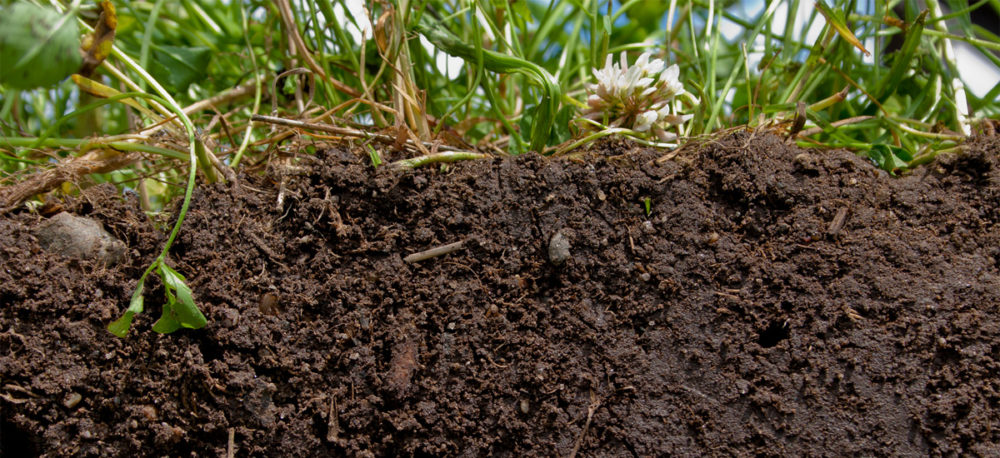
World Soils Day is a reminder of the reasons this critical resource needs protecting. Photo: USDA-NRCS
Happy World Soils Day! We seem to hear a lot about the importance of clean water and clean air, but soils less frequently get the attention they deserve. Soils not only serve as the foundation of our food system, but also provide many additional environmental benefits, from flood management to supporting biodiversity to water purification. Thanks to concerted efforts—such as the United Nations declaration of 2015 as the “International Year of Soils”, which provided a platform to raise awareness—soils are finally starting to get more time in the spotlight.
Another moment in the spotlight comes in an announcement today from the White House Office of Science and Technology Policy (OSTP), recognizing the efforts of federal agencies, the private sector, and non-profit partners to work toward “the long-term health and sustainable use of one of America’s most important natural resources: its soil.” Their announcement includes some of the research that we are expanding here at the Union of Concerned Scientists on how diversified farming systems can improve soil resilience, conserve and improve water and energy resources, and contribute to greater farm profitability. Stay tuned for more from us on this front! In the meantime, here are a few fun facts to help you celebrate the soil.
1. Only a fraction of the earth’s surface has soil suitable for growing food
Although we may think there is a lot of soil to go around for growing food, there’s less than you might think. It is estimated that crop production globally makes up 11% of the earth’s surface, although prime farming lands are rarer. I love this animation from the American Farmland Trust, illustrating how much of the planet is actually suitable for sustainably growing food:
The bottom line is that proper soil management (through best practices such as consistently covering the soil, not disturbing it through minimal plowing, and growing diverse plants) is critical to protecting this limited resource.

What you see at the soil surface is just the tip of the iceberg, as this soil profile from Texas reveals its unique geographic fingerprint. These soils can shrink and swell with moisture changes, moving up the gray clay-like material deeper in the soil profile. Photo: USDA-NRCS.
2. Soils are unique fingerprints of their locations
Have you ever wondered why soils look and feel different in different places? Sure you have! The factors that help form soil are directly tied to a location’s geography. How soil forms depends on the climate of the area (hot temperatures and high rainfall can weather soils, for example), the plants and trees that grow above it, and the underlying geology or rock material that break down over long periods of time. As a result, I like to describe soil as the living crust of the earth or the interface of biology, climate, geology and time. Look around next time you travel, or even when you step outside if you are curious about observing the rich diversity of soils for yourself.

My current and prior research explores why we should not “farm naked” – rich soil resources should be covered 365 days a year with living plants to protect from degradation.
3. Soils are home to many diverse creatures
Speaking of diversity, soil is known to be one of the most diverse ecosystems on earth. It is estimated that one gram of soil is home to several thousand species of bacteria, and that a typical healthy functioning soil has hundreds of species of fungi, as well as dozens of different species of vertebrate animals, earthworms and insects. Next time you want to call soil the four-letter word dirt, remember, it is alive!
4. Soils can help mitigate and adapt to climate change
Soil is a major component of the global carbon cycle. That makes soil a tool (but not the only one we need) to mitigate rising emissions of carbon in the atmosphere. Soil carbon is also known to be a critical element that helps increase the amount of water stored in soil. So with proper management, we can increase the capacity of soil to act like a “sponge” and reduce impacts from severe weather (including both droughts and floods!).
5. The United States is lucky to have many of the most productive soils in the world
Soils vary from location to location and, on the soil front, Americans have much to be grateful for. The U.S. has a disproportionately high amount of the most productive soils in the world: Mollisols. These are soils derived primarily under the cover of perennial grasses, whose living roots (and frequent root decay) in the soil create the food web for many diverse organisms. Mollisols make up approximately 7% of the earth’s ice free surface, and 22% of these soils globally are found in the U.S., predominantly in the Upper Midwest and Plains states. This last point is so important to me, as someone who lived in Iowa and studies Midwest agriculture. Research from Iowa found an immense human fingerprint in degrading many soils over just the last several decades.
For these reasons and many more, we and many others are working hard to understand the value and benefits of protecting this fascinating and critical living resource.

